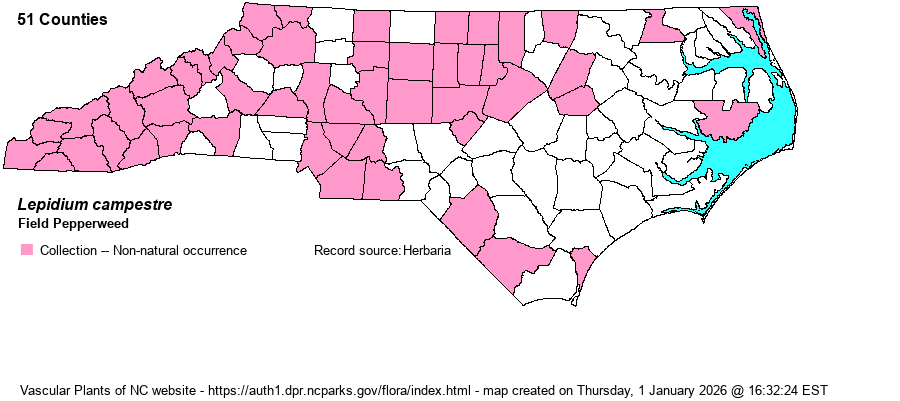| Author | (L.) W.T. Aiton | |
| Distribution | Throughout the Mountains and Piedmont, absent from the Sandhills, scarce on the Coastal Plain.
Native of Eurasia; in N.A. throughout most of the U.S. and southern Canada. | |
| Abundance | Frequent to common in the Mountains and Piedmont; rare in the Coastal Plain; absent from the Sandhills. | |
| Habitat | Fields, barnyards, roadsides, railroads, gaslines, powerlines, disturbed soils. | |
| Phenology | Flowering and fruiting March-June. | |
| Identification | Field Pepperweed grows up to 1.5 feet tall, the stem densely hairy. The leaves stand erect or strongly ascending, sessile, lance-shaped and a bit wider at the base of the leaf, the margins not toothed. The flowers are small and white; the fruits ovate to rather rotund, widely winged. L. perfoliatum differs in its yellow petals, deeply clasping stem leaves, and pinnatifid basal leaves (vs. toothed). The native L. virginicum has similar white flowers but has narrower leaves, with petioles. | |
| Taxonomic Comments | | |
| Other Common Name(s) | | |
| State Rank | SE | |
| Global Rank | GNR | |
| State Status | | |
| US Status | | |
| USACE-agcp | | |
| USACE-emp | | |

